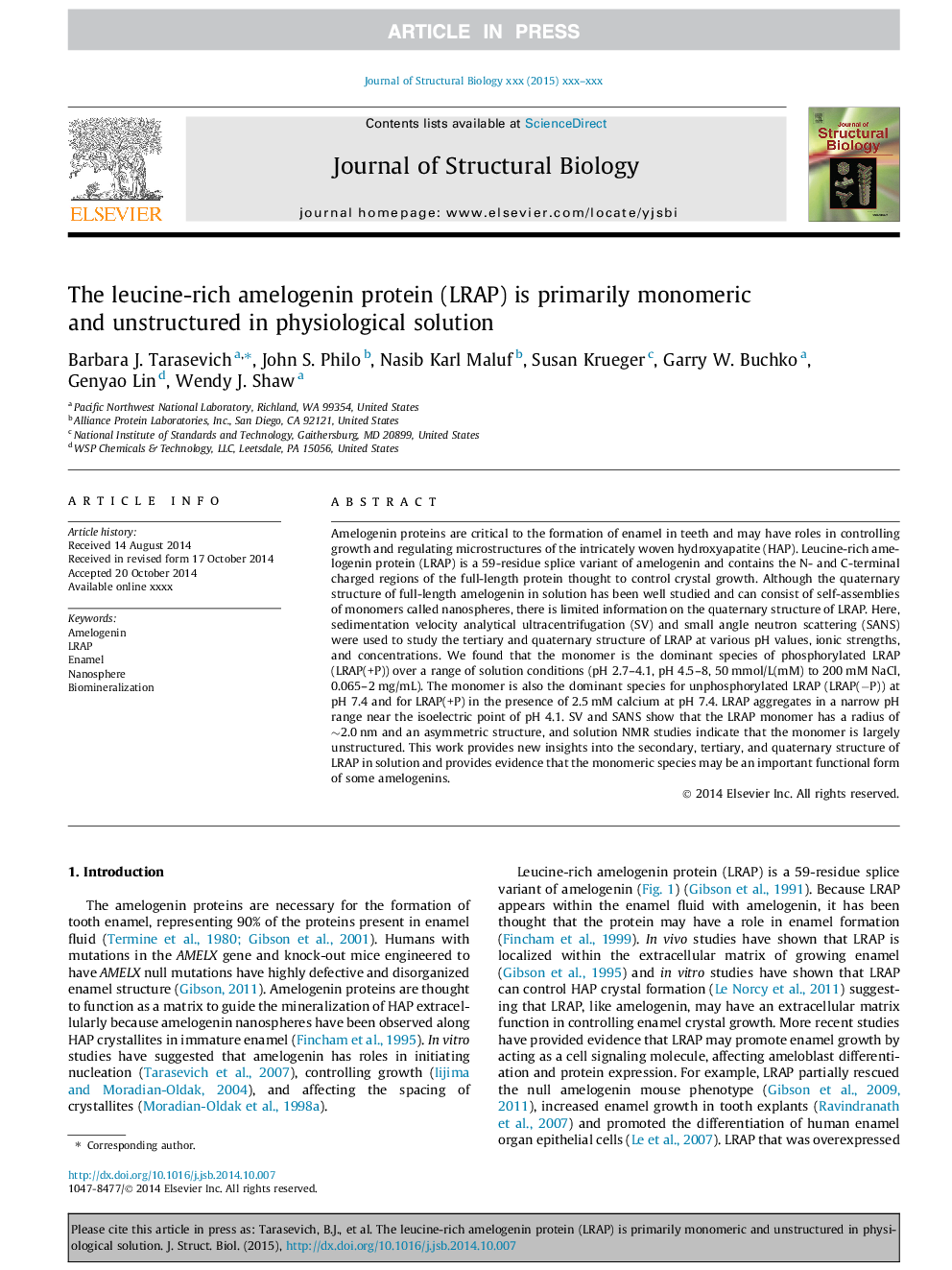| Article ID | Journal | Published Year | Pages | File Type |
|---|---|---|---|---|
| 5913926 | Journal of Structural Biology | 2015 | 11 Pages |
Abstract
Amelogenin proteins are critical to the formation of enamel in teeth and may have roles in controlling growth and regulating microstructures of the intricately woven hydroxyapatite (HAP). Leucine-rich amelogenin protein (LRAP) is a 59-residue splice variant of amelogenin and contains the N- and C-terminal charged regions of the full-length protein thought to control crystal growth. Although the quaternary structure of full-length amelogenin in solution has been well studied and can consist of self-assemblies of monomers called nanospheres, there is limited information on the quaternary structure of LRAP. Here, sedimentation velocity analytical ultracentrifugation (SV) and small angle neutron scattering (SANS) were used to study the tertiary and quaternary structure of LRAP at various pH values, ionic strengths, and concentrations. We found that the monomer is the dominant species of phosphorylated LRAP (LRAP(+P)) over a range of solution conditions (pH 2.7-4.1, pH 4.5-8, 50Â mmol/L(mM) to 200Â mM NaCl, 0.065-2Â mg/mL). The monomer is also the dominant species for unphosphorylated LRAP (LRAP(âP)) at pH 7.4 and for LRAP(+P) in the presence of 2.5Â mM calcium at pH 7.4. LRAP aggregates in a narrow pH range near the isoelectric point of pH 4.1. SV and SANS show that the LRAP monomer has a radius of â¼2.0Â nm and an asymmetric structure, and solution NMR studies indicate that the monomer is largely unstructured. This work provides new insights into the secondary, tertiary, and quaternary structure of LRAP in solution and provides evidence that the monomeric species may be an important functional form of some amelogenins.
Related Topics
Life Sciences
Biochemistry, Genetics and Molecular Biology
Molecular Biology
Authors
Barbara J. Tarasevich, John S. Philo, Nasib Karl Maluf, Susan Krueger, Garry W. Buchko, Genyao Lin, Wendy J. Shaw,
